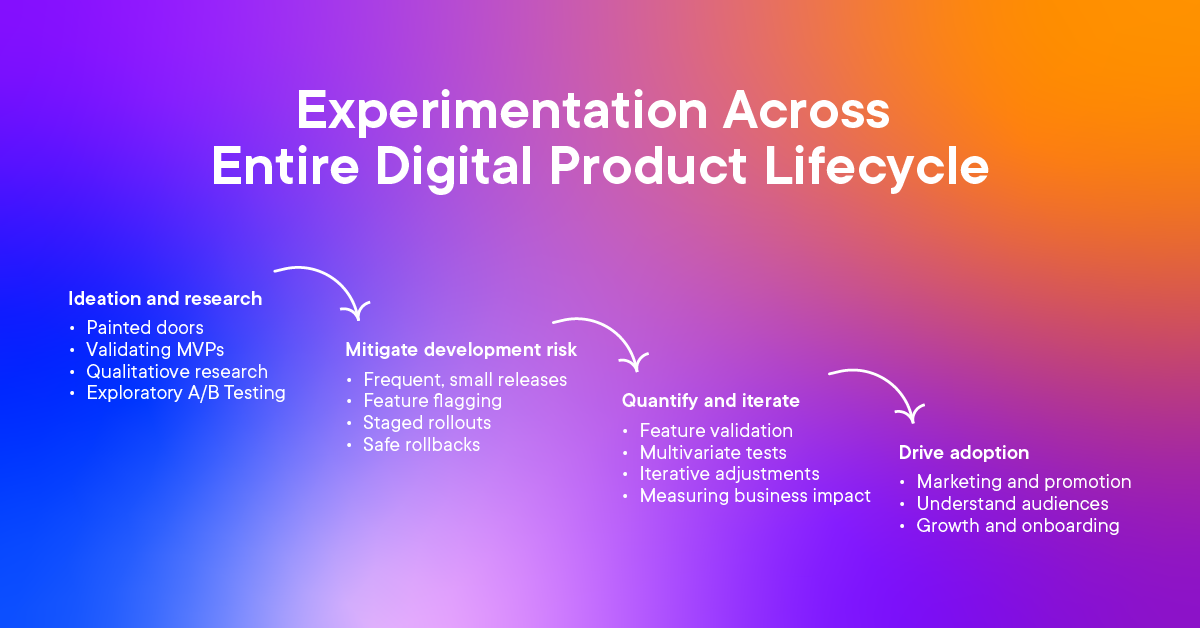Painted door test
What is a painted door test?
The painted door test creates the illusion of a feature or service without you having to actually build it. It is also known as the fake door test. It can simulate a feature with a non-functional option, such as a clickable button or link.
This approach validates if your idea is valuable to your target audience. You can collect data on user behavior and preferences to make informed decisions about the viability before fully committing to development.
A part of this testing process is also a test known as a fake door test. A fake door test gauges interest in a new product or feature by presenting it as available (e.g., via a button or link). When users click, they learn it’s not ready yet. The number of clicks measures interest, helping decide if it's worth developing.
Testing in focus groups is the key:
- Gather insights: Understand customer needs and preferences.
- Refine ideas: Improve product concepts with feedback.
It helps in creating a better MVP. Usually before a product launch, focus on:
- Validating assumptions and gathering user feedback early to minimize risks.
- Testing features with genuine user interest, increasing product success chances.
Painted door tests are particularly effective in:
-
Product validation
Product managers can prove before developing. This method shows whether there's genuine demand for a proposed product feature or product on the roadmap. -
Feature prioritization
There are a lot of great product ideas out there in the real world. As a product team, you might also receive requests from internal teams and customers to build new features. Prioritize which features to invest in by identifying which ones have the highest impact potential for your business. -
Market entry strategy
If you’re a startup entering new markets or niches, painted door tests can tell you a lot about user preferences and behaviors.
In short, a painted door test is a 'false feature' method to test website/app ideas and features before investing significant capital in developing them.

Image source: Optimizely
Painted door test vs. Traditional prototyping
The name "Painted Door Test" is derived from the analogy of placing a painted door in the middle of a plain wall. In essence, it's closely related to usability testing. Here, the idea is that the door becomes the focal point, representing a specific feature or call-to-action to be evaluated. It helps in attracting users' attention and encouraging interaction.
Painted door test:
- Nature: Low-fidelity, non-functional.
- Purpose: Gauges early user interest with minimal investment and metrics.
- When to pick: Early-stage ideas, limited resources, quick assessment.
Traditional prototyping:
- Nature: Functional or semi-functional.
- Purpose: Tests detailed functionality, usability, and user experience.
- When to pick: Refining features, detailed a/b tests, ample resources available.
All in all, pick the painted door test for quick assessments in the early stages of your product experimentation process. Choose traditional prototyping when refining specific features or conducting more detailed testing with ample resources.
How to conduct a painted door test?
To start you need to define the objective. Simply having a goal is one thing but knowing the difference between positive, negative, and neutral results is crucial to mitigate biases, including those from influential figures like HiPPOs.
A positive result shows a favorable audience response, meaning you can go ahead and build the feature. Negative outcomes highlight alignment mismatch and the need for a change in approach. Neutral or inconclusive results require a deeper analysis or adjustment.
Here are the remaining steps to get started with a painted door test and deliver a successful product for your user base:
-
Identify
Identify the specific feature or concept you want to assess and the insights you aim to gather. -
Pick an element
A button, link, or any interactive component representing a feature under consideration. -
Design
Create a simple, visually distinct representation of the chosen element. For example, a placeholder graphic, a colored box, or any visual cue that draws attention. -
Implement
Integrate the designed element into an actual webpage or interface where users interact with it. Ensure it does not mislead users into thinking it is fully functional. -
Monitor interactions
Allow users to interact with the non-functional element naturally. Pay attention to clicks, hover actions, or attempts to engage with the feature. -
Gather feedback
Use surveys, interviews, or direct observations to understand user expectations, perceptions, and reactions. -
Analyze results
Check patterns in user behavior. Check the interest levels to identify any misconceptions users may have had about the non-functional element. -
Iterate or pivot
Based on the insights gained, iterate on the design or pivot your approach if necessary.
Benefits of painted door tests
- Cost-effective - By avoiding premature development, you save valuable resources that can be allocated to features with proven demand.
- Risk mitigation - You can minimize the risk of investing in features or products that might not gain traction in the market.
- Data-driven decision making - You get insights based on real user behavior, guiding product development decisions.
- Speed to market - You can validate ideas without lengthy development cycles, enabling faster iterations and adaptations.
Painted door test examples
Check out these painted door test examples you can use:
- Subscription services - Offer a subscription-based service on your website without actually providing the service. Measure sign-up rates and interest to gauge demand.
- Feature teasers - Promote upcoming features on your platform and track user engagement through click-through rates or sign-up forms.
- Pre-order campaigns - Launch pre-order campaigns for new products or features to assess interest levels and adjust production accordingly.
The final word on painted door tests
Painted door tests can help you make better-informed decisions, minimize resource risks, and accelerate innovation.

